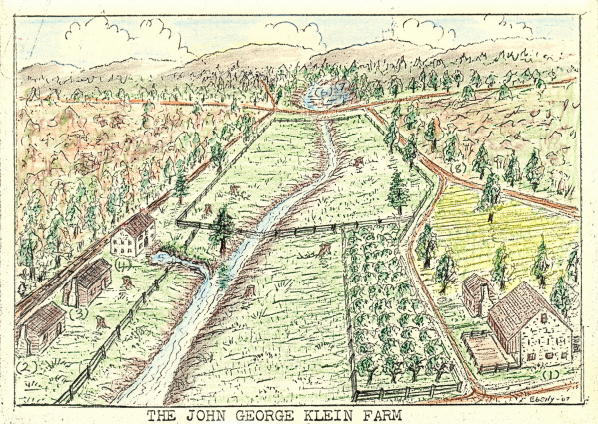
John George Klein’s 491 acre farm, now the town of Lititz, was probably the least profitable of any farms in Warwick Township. When Klein and his wife arrived here in 1740, it was the last tract still for sale. It was a jungle of scrub oak and bramble with many outcroppings of limestone and a huge swamp. The only tillable land was in the east end. Klein hoped to make the farm pay by grazing cattle in the large meadows and also by extensive fruit growing.
When George Klein learned that the Moravian Congregation was seeking a site along the Bethlehem-Salem road to build another town, he offered his farm in exchange for a lifetime annual income of seventy pounds. (about $4,000 in 1967) It was because the farm had an abundance of limestone, springs, good drainage and a stand of virgin timber that the offer was accepted. Klein’s original stone barn, the oldest building in Lititz, still stands at the corner of Front and Water Streets. Across the creek on Main Street the first log house is believed to have been Klein’s home. This has since been rebuilt and is now the log portion of the Johannes Mueller House. The second log house was the home of Klein’s farmer, Henry Haller. As to the third house, Brickenstein states: “In 1754 George Klein built a two-story stone house near his long house.” This became known as the Pilgerhaus and the “Big Spring” back of the home is still remembered by senior citizens. (1967)
At this time the park was a huge swamp and the “Big Spring Head” often referred to was not drained until some years later. Front and Cedar Streets were part of the road that led to the Nanticoke Indian village near Clay.
